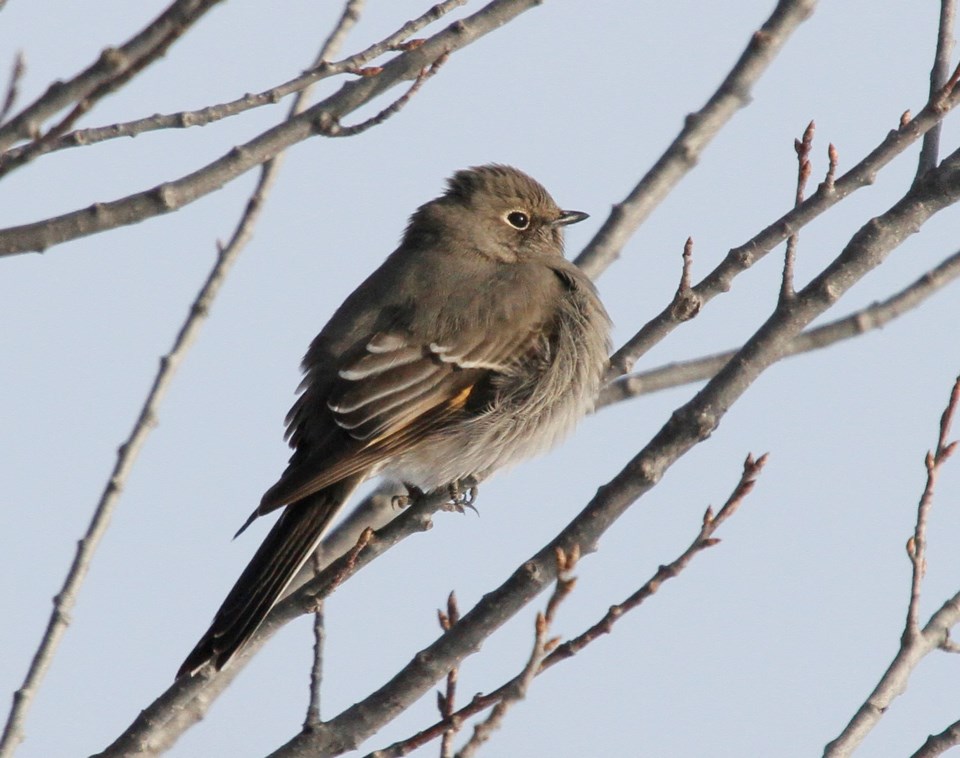SASKATOON — A new bird-window collision study in Saskatoon is taking flight this spring, aiming to protect migratory birds by identifying urban design risks and promoting bird-friendly solutions.
Â鶹ÊÓƵ reached out to those undertaking the study in Saskatoon.
Project co-ordinator Anas Ibinu Ansari explains, “Essentially, it’s a systematic approach to document bird-window collisions in urban areas. It helps us understand where, when and why birds are striking windows. These collisions aren’t random — they’re caused by building design, nearby vegetation, and behavioural and migratory patterns.”
Ansari is a graduate student at USask’s School of Environment and Sustainability (SENS), in the Master of Sustainability, Regenerative Sustainability program.
According to the Government of Canada, between 16 to 42 million birds die every year in Canada due to collisions with buildings. Nationwide, it’s the second leading cause of human-induced bird mortality, after domestic cat predation. Saskatoon lies along a major migratory Central Flyway, and the combination of river valley habitat and modern architecture, especially reflective glass buildings near riparian vegetation, creates a hazard contributing to these mortalities.

Ansari adds, “There are two key reasons this study is being undertaken. First, from a conservation perspective, it’s essential to understand which buildings and urban design elements pose the greatest risks to birds. Identifying these high-risk areas allows us to recommend practical, science-based mitigation strategies to reduce bird mortality.
“Second, this project supports Saskatoon’s aspirations to support bird-friendly measures. Other cities in Canada are certifying as Bird Friendly Cities, which is a growing national movement that promotes biodiversity and urban sustainability. Conducting a standardized baseline survey is a critical first step toward meeting the criteria for certification.”
Ansari also notes the work aligns with national and international conservation commitments, including the Migratory Birds Convention Act of 1994. Beyond policy, he says, there’s a broader public health dimension: under the One Health framework, which recognizes the interconnected health of people, animals and ecosystems, protecting urban bird populations contributes to a more resilient and ecologically balanced city.
Ultimately, this project represents a proactive, collaborative approach to urban planning where scientific research, community involvement and policy goals intersect to create healthier spaces for both wildlife and people.
The field survey is being conducted on selected buildings in Saskatoon’s downtown core. The work is made possible through collaborative efforts involving bird experts, conservationists and wildlife rehabilitators from partner organizations.
“Living Sky Wildlife Rehabilitation and the Saskatoon Nature Society, students from USask, along with local bird enthusiasts, have been signing up to volunteer,” says Ansari.
He adds, “Living Sky Wildlife Rehabilitation is providing valuable training to our volunteers on how to safely handle injured birds and properly recover bird carcasses. Field data collection is a significant undertaking, as we are conducting daily evening surveys throughout the month of May, which is the peak spring migration season. We're aiming to deploy a team of at least four volunteers each day, working across different zones of the downtown area, with a core group of about 10 to 15 committed volunteers supporting the effort.”
This pilot initiative aims to generate baseline data. While it’s a strong starting point, fully understanding the scope of bird-window collisions in Saskatoon requires sustained, year-round monitoring.
Although not the first effort of its kind in the city, it is the first time standardized data will be collected from systematically selected representative buildings using a defined set of protocols.
“The inspiration for this project came from the City of Saskatoon. The city’s Green Pathways implementation plan identifies Bird Friendly Civic Guidelines or Standards as an important initiative to pursue. Not only does creating a baseline bird-collision survey help the city make progress on their Green Pathways objectives, it is also one of the key criteria for the Bird Friendly City certification under Nature Canada’s program, should the City of Saskatoon decide to pursue that designation. Currently, 14 cities across Canada have received this designation, including Regina.”
The project is being carried out under the supervision of Dr. James Robson (PhD) of SENS, with project advisors Shannon Dyck and Twyla Yobb from the City of Saskatoon’s Sustainability Department.
The data collected — including observations, species identification, precise locations and building characteristics — will be analyzed to develop a comprehensive bird-collision risk assessment for the city. This includes mapping high-risk areas and identifying building features that may contribute to collisions.
“We are producing a GIS-integrated dataset, developing risk assessment models and preparing a final report with recommendations for mitigation strategies,” notes Ansari.
The collaborating group is also exploring options to contribute findings to the Global Bird Collision Mapper, a citizen science platform where individuals can report bird collisions and view data on high-risk areas.
“Making this data accessible to the public helps raise awareness and encourages community involvement in creating a safer environment for migratory birds.”
The group welcomes more community involvement. Volunteers can contribute to field surveys and share their bird collision observations on citizen science platforms such as eBird, iNaturalist or the Global Bird Collision Mapper.
“Even simple actions like applying bird-safe window films at home can make a significant impact,” says Ansari.
Public awareness is key to preventing bird-window collisions. Research indicates that nearly 99 per cent of these collisions occur at homes and low-rise buildings. Additionally, predation by domestic cats remains one of the leading causes of bird mortality. This underscores the urgent need for widespread education and community engagement.
“To help spread awareness, our team is developing infographic posters, social media content and community outreach materials,” Ansari adds. “We want to ensure this initiative doesn’t end with just one pilot project. Our long-term goal is to integrate bird-friendly practices into urban planning and foster ongoing public engagement through collaborative partnerships.”
As Saskatoon continues to implement its Green Pathways plan, this study marks an important first step — grounded in science, supported by the community, and inspired by a shared commitment to building a more sustainable urban environment where both people and birds can thrive.




